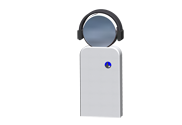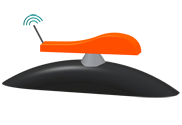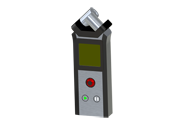Cetacean Research™ RUDAR™
Remote Underwater Digital Acoustic Recorders
Cetacean Research™ RUDAR™ are held-held, ultra compact, autonomous underwater recording devices. Some are for short-term deployments, some for long-term; some, such as the new DIVEAR™, can be operated by hand while swimming with the device; features vary. RUDAR™ are designed for a wide range of applications and budgets.
The Cetacean Research™ nano Remote Underwater Digital Acoustic Recorder (nRUDAR-mk2™) is a hand-held, ultra compact, short-term, autonomous underwater recording device that is designed for a wide range of applications.

Uses of the nRUDAR-mk2™ vary from manual underwater recording while diving to autonomously recording wild cetacean vocalizations for several days continuously. This makes it an excellent tool for recording high resolution audio for underwater video production, as well as scientific research
- Exceptionally easy to use
- WiFi recording control and file transfer capabilities.
- Up to 24-bit/96kHz sample rate and 45kHz bandwidth
- Up to 4.5 days continuous recording time: 13x longer than original nRUDAR™
- BWF file format for easy editing and analysis using SpectraPLUS software
- Threshold-triggered recording feature
- Selectable file size rollover from five minutes to one hour
- Hydrophone sensitivity of -169dB, re. 1V/μPa
- 100m depth rating
See the other photos in this series to see just how small and portable these powerful autonomous underwater recording devices are!
The Cetacean Research™ µRUDAR-mk2™(micro Remote Underwater Digital Acoustic Recorder) is a very compact, short-term, autonomous recording device that is designed for fast and easy deployment in a wide range of applications.

Uses of the µRUDAR-mk2™ range from remote detection of methane bubbles to recording wild cetacean vocalizations for periods of more than two days.
The µRUDAR-mk2™ uses the same hydrophone element and preamplifier as our Sensor Technology SQ26-08 hydrophone along with a 24-bit, 96kHz digital recorder.
- Exceptionally easy to use
- WiFi recording control and file transfer capabilities.
- Up to 24-bit/96kHz sample rate and 45kHz bandwidth
- Up to 16.5 days continuous recording time: 8x longer than original μRUDAR™.
- BWF file format for easy editing and analysis using SpectraPLUS software
- Threshold-triggered recording feature
- Selectable file size rollover from five minutes to one hour
- Hydrophone sensitivity of -169dB, re. 1V/μPa
- 100m depth rating
See the other photos in this series to see just how small and portable these powerful autonomous underwater recording devices are!
The Cetacean Research™ RUDAR™ (Remote Underwater Digital Acoustic Recorder) is a compact, long-term autonomous recording device that is light enough to be deployed by hand from small boats.
The RUDAR™ system utilizes the data acquisition and processing components of the ST1400ENV mobile data recorder & sound level monitor. Interchangeable Cetacean Research™ C57- or C305- series hydrophones are used for signal detection. This system has very low power consumption that allows extended remote recording sessions and continuous high-speed data acquisition.
- Working depths of more than 1000m available
- Up to four hydrophone channels sampled with 24-bit resolution
- Sample rates selectable over wide frequency range
- Flexible recording scheme programmability
- Can record using two independent schemes and sample rates simultaneously
- Data written to hot-pluggable internal hard drives for very long recording times
- Ultra-fast data transfer for post processing analysis
- Light weight for easy deployment from small boats
- Rugged housing for long life in harsh oceanographic conditions
Development Background - the idea for a portable remote underwater recording device came about after several conversations in 2000 and 2001 with fisheries biologist Rodney Rountree of the University of Massachusetts at Amherst. The first conceptual RUDAR™ prototype was completed in early January 2002 for NOAA and the University of Hawaii's Coral Reef Ecosystem Investigation.









